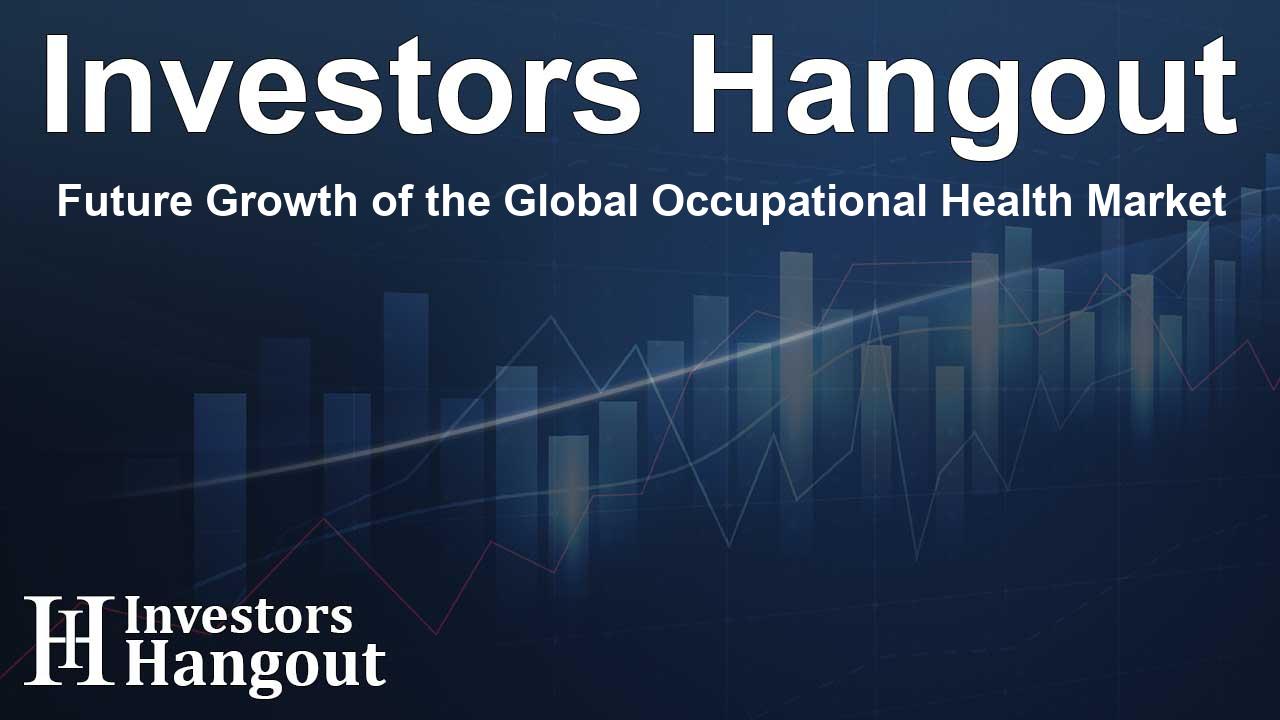Future Growth of the Global Occupational Health Market

Global Occupational Health Market Overview
The Global Occupational Health Market is on a robust growth trajectory, expected to flourish significantly in the coming years. Recent analyses reveal that this market was valued at approximately $5.45 billion and is anticipated to reach an impressive $8.47 billion by 2032. This represents a compound annual growth rate (CAGR) of 6.5% from recent studies. The surge can be attributed to the increasing focus on employee well-being, vibrant corporate health initiatives, and a rising awareness of occupational safety across various industries.
Key Factors Driving Market Expansion
Occupational Health Services: The occupational health services segment is projected to command a substantial share, accounting for 58% of the market by 2025, translating to approximately $4.34 billion. This growth is largely fueled by a notable rise in employer investments in workplace health programs.
On-Site Health Services: Demand for immediate access to healthcare in the workplace is expected to drive on-site health services to capture 35% of the market by 2025, equating to around $2.62 billion.
Manufacturing Sector Dominance: The manufacturing sector will remain a pivotal player within this market, expected to secure a 40% market share by 2025 with nearly $2.99 billion in revenue, driven by high-risk workplace factors and strict safety regulations.
Regional Insights: North America is projected to dominate the market, holding approximately 40% of the market share at about $2.99 billion, supported by progressive workplace health policies and corporate wellness initiatives. In contrast, the Asia Pacific region is poised for the fastest growth, with a projected CAGR of 7.1%, attributed to growing awareness of occupational safety and supportive governmental health campaigns.
Challenges and Limitations in Expanding Access
Despite the optimistic growth forecast, significant challenges exist, particularly in developing nations. Limited awareness and underdeveloped occupational health frameworks create barriers to implementing effective health policies. Small and medium enterprises (SMEs) often struggle to establish health-promoting practices, which contributes to hindering market expansion.
Moreover, restricted coverage in health insurance programs combined with the high costs associated with occupational health services makes universal accessibility a challenge.
Market Opportunities and Emerging Trends
As healthcare transformation continues, many companies stand to gain from integrating telehealth and innovative digital technologies into occupational health frameworks. The implementation of AI-driven health risk assessments, wearable health monitors, and virtual consultations will foster better access to medical care without interrupting employees' workdays, inevitably improving productivity and reducing absenteeism.
Additionally, organizations are increasingly leveraging mental health resources such as stress management programs and wellness apps to promote a healthier workplace environment, empowering employees to balance work and personal life effectively.
Technology Integration and Its Impact
Recent trends indicate a growing adoption of AI-driven health monitoring systems that are enhancing occupational health risk assessments and preventing workplace health hazards. Furthermore, mental wellness programs, comprising stress management workshops and therapy sessions, are becoming critical as employers prioritize employee mental health.
As work patterns evolve, especially with the rise of hybrid work models, the necessity for ergonomically designed office spaces is more pronounced than ever, ensuring the well-being and productivity of the workforce.
Market Competitors and Landscape
The competitive landscape of the occupational health market features several key players, including Concentra Inc., Medcor, Inc., and Occupational Health International (OHI). These organizations are pivotal in shaping the market through innovative solutions and strategic health initiatives.
Recent Developments in the Industry
Noteworthy developments include the World Health Organization's recent guidelines that stress the importance of employer-funded mental health programs. Companies are also launching AI-based tools to enhance workplace safety and early disease detection.
Frequently Asked Questions
What is the projected value of the Global Occupational Health Market by 2032?
The market is projected to reach $8.47 billion by 2032.
What factors are driving the growth of the occupational health market?
Key factors include increased investments in employee health programs and rising workplace safety awareness.
How does the manufacturing sector contribute to the market?
The manufacturing sector is expected to dominate, capturing about 40% of the market share due to high-risk factors.
What challenges are faced in developing nations regarding occupational health?
Challenges include limited awareness and inadequate health frameworks preventing effective policy implementation.
What role does technology play in the future of occupational health?
Technology, particularly AI and telehealth, is revolutionizing occupational health by enhancing service access and preventative measures.
About The Author
Contact Dylan Bailey privately here. Or send an email with ATTN: Dylan Bailey as the subject to contact@investorshangout.com.
About Investors Hangout
Investors Hangout is a leading online stock forum for financial discussion and learning, offering a wide range of free tools and resources. It draws in traders of all levels, who exchange market knowledge, investigate trading tactics, and keep an eye on industry developments in real time. Featuring financial articles, stock message boards, quotes, charts, company profiles, and live news updates. Through cooperative learning and a wealth of informational resources, it helps users from novices creating their first portfolios to experts honing their techniques. Join Investors Hangout today: https://investorshangout.com/
The content of this article is based on factual, publicly available information and does not represent legal, financial, or investment advice. Investors Hangout does not offer financial advice, and the author is not a licensed financial advisor. Consult a qualified advisor before making any financial or investment decisions based on this article. This article should not be considered advice to purchase, sell, or hold any securities or other investments. If any of the material provided here is inaccurate, please contact us for corrections.
